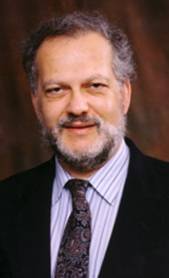|
2010 TSC - PLENARY 1 William James Centennial
Bernard J. Baars How William James accidentally created behaviorism
Bernard J. Baars
Dr. Bernard J. Baars is former Senior Research Fellow in Theoretical Neurobiology at the Neurosciences Institute in San Diego. He is interested in human language, the brain basis of consciousness, volition, and a variety of related topics. Baars pioneered a cognitive theory of consciousness called Global Workspace Theory, which is widely cited in philosophical and scientific sources. Together with William P. Banks, Baars has edited the journal Consciousness & Cognition for more than fifteen years. He has written an introductory text for cognitive neuroscience, called Cognition, Brain & Consciousness: An Introduction to Cognitive Neuroscience. (Baars & Gage, Eds. San Diego, Calif.: Elsevier/Academic Press, 2007). Baars was founding President of the Association for the Scientific Study of Consciousness. (See www.nsi.edu/users/baars and http://bernardbaars.pbwiki.com)
# # #
William James’ Principles of Psychology (1890) is commonly regarded as the greatest summary of empirical knowledge about consciousness of the 19th century. James’ Principles covered the known conscious processes, ranging from perception and cognition, language and fringe-conscious events, like feelings of knowing. James defined psychology as “the science of mental life,” meaning “conscious mental life.” The 19th century was a Golden Age of Consciousness Science, with major discoveries about hypnosis and conversion disorders, the brain and emotions, Broca’s and Wernicke’s language regions, visual imagery, endogenous feelings, multiple personality disorder, the capacity limits of consciousness and immediate memory, and much more. James’s book was greeted almost immediately as a masterpiece, and three years later, James produced his Briefer Version (1893), which became the most widely used introduction to psychology in American colleges until about 1920. It established James as a founder of empirical psychology. His philosophical papers on pragmatism came later. William James placed consciousness at the center of psychological science. And yet, he also triggered seven decades of scientific rejection and trivialization of human consciousness. His paper of 1904 called “Does consciousness exist?” was published in the new journal Psychological Review, under the editorship of John B. Watson. James’ 1904 paper reflected his own lifelong ambivalence about a science of mind, and particularly about free will. James suffered from repeated bouts of near-suicidal depression, which often focused on the issue of free will. He felt compelled to rescue metaphysical free will as a personal cure, and also to resolve an endless philosophical and cultural crisis. By 1904 James was looking to psychic phenomena and the soul of traditional metaphysics as a possible solution to the crisis of meaning and spiritual comfort that affect William James personally, but also many of his contemporaries and successors. The 1904 sought to eliminate the mind-body paradoxes he struggled with by decomposing “consciousness as an entity” into an endless series of conscious moments; but James never denied that mental life consisted of such subjective moments. It was John B. Watson who decided to cut the mind-body knot, proclaiming his radical behavioristic manifesto two years after James died in 1910. To make psychology into a “respectable” science, based on physical observations like the mature sciences of that time, Watson argued for a complete purge of psychological terms involving consciousness, volition and self. Whatever was left over, Watson argued, could be re-interpreted in purely physical terms. Since about 2/3 of the vocabulary of English involves consciousness, volition and self, Watson’s radical behaviorism purged almost the entire psychological vocabulary that had accumulated from the beginnings of language. Because James’s deep ambivalences were shared by numerous scholars and psychologists, a militant minority of radical physicalists were drawn to Watson’s intellectual purge. Watson was strongly encouraged by Bertrand Russell in England, and by a parallel purge of “mental” terminology in Russian physiology beginning with Sechenov and I.P.Pavlov, in Germany by Helmholtz and positivism, and by a radical reductionistic movement in biology. In a political context Watson, Pavlov (and later Skinner) came to prominence by promising utopian manipulations of the human condition, simply by analyzing and controlling human beings by reflexes and operant learning. Reflex-reductionism became the received wisdom in the newly born academic sciences of psychology and physiology, in spite of the total absence of proof for such ideas. Even today “reflexes” and “conditioning” are still falsely viewed as “atoms” of behavior. But behaviorism provided a consistent physicalistic basis for the new and insecure academic sciences of psychology, sociology, political science, and analytic philosophy. The behavioristic purge was pursued for almost a century in Anglo-American philosophy, psychology, and physiology. Consciousness and its huge related vocabulary were expelled from “respectable” philosophy and science. The result was a kind of psychic wound in the Western intellectual tradition, a Dark Age comparable to the systematic purging of classical learning by the medieval Church. C.P. Snow’s struggle between the “Two Cultures” of science and the humanities was a direct result. While literature and Continental philosophy built upon James’ work, the new academic sciences rejected some 25 centuries of humanistic scholarship, going back to ancient Greece and in Asia, to Vedanta, Buddhism and Taoism. We are seeing a cautious renaissance of consciousness science today, but there is much we have not yet rediscovered from the 25 centuries of human thought that flowered in James’ Principles of 1890, only to be torn out root and branch by the 1920s.
|
|
|||||||||||||
